Article follows the photos. Click on a thumbnail to view and download a high-resolution version of the image. Due to the large file size of the high-res images, they may take a few minutes to appear. You must be logged in to view the high-res images. 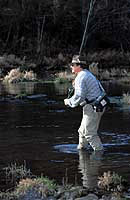
Little Missouri River 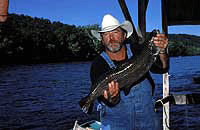
Little Red River 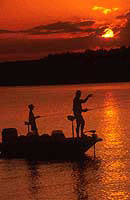
Lake Greeson bass fishing 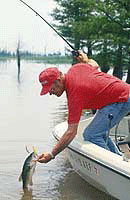
Millwood 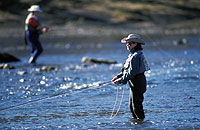
White River April 17, 1998
Angling Arkansas's Waters
Offers Scenic Chance at Fish
*****
By Jim Taylor, travel writer
Arkansas Department of Parks and Tourism
When it comes to fishing in Arkansas, "The Land of Opportunity" -- a former state motto -- remains an apt description. The state's more than 600,000 acres of lakes and 9,700 miles of streams offer anglers numerous chances to land a trophy or catch a limit from a variety of freshwater species.
To augment those opportunities in what is now touted as "The Natural State," nature gets a helping hand at keeping Arkansas's waters alive with fish. The Arkansas Game and Fish Commission (AG&FC) operates one of the largest state-owned, warm-water hatchery systems in the world. In addition, three trout hatcheries are also located within the state.
Even though Arkansas has produced two current world-record fish with a third pending completion of certification, its homegrown anglers know well that a fishing outing in their state is frequently about more than the fish.
It can be just as much about watching an osprey plunge feet first into the water and soar away with its prey, or experiencing a fiery sunset framed by Delta cypresses. Or floating on the clear waters of an Ozark Mountain stream beneath a towering, lichen-covered limestone bluff, or enjoying the turning leaves of autumn reflected in the still waters of a quiet cove.
When it comes to fish, Arkansas is most famous beyond its borders for the outstanding trout fisheries that have been developed over the last five decades by the AG&FC with help from two federal trout hatcheries.
Prior to 1950, Arkansas trout fishing was basically limited to the state's only major cold-water stream, the Spring River. The Spring begins as the 58-degree, 9-million-gallons-an-hour flow of Mammoth Spring, which is located in Arkansas at the Missouri state line. Rainbow trout were first stocked on the Spring around the turn of the century.
With the completion of Norfork Dam on the North Fork of the White River in 1944 and Bull Shoals Dam on the White River in 1951, the groundwork was laid for major expansions of the state's trout fisheries.
Faced with the devastation of significant stretches of habitat for warm-water fish species, the AG&FC decided to introduce trout into the combined 97 miles of oxygen-rich, cold-water races below the dams. Cooperating with federal officials, they placed 39,216 rainbow trout into the streams in 1951.
Stocking efforts received a boost in 1957 when, as mitigation for the loss of warm-water habitat, the U.S. Fish and Wildlife Service opened the Norfork National Fish Hatchery near Norfork.
Rainbows from the hatchery grew phenomenally well in the White and North Fork and soon the two streams were among the country's finest destinations for trophy trout. Catches of 5-to-7-pound rainbows were common and the state-record rainbow (19 pounds, 1 ounce) was caught in 1981 by Jim Miller of Memphis on the White River.
In the past two decades, increased fishing pressure on the White and North Fork has mostly limited catches of trophy rainbows to catch-and-release areas (though overall catch rates remain among the nation's highest).
That is true in part because natural reproduction of rainbows in Arkansas streams accounts for less than one percent of the state's annual rainbow population.
Such is not the case, however, with brown trout. Browns were stocked early in the AG&FC stocking program but were discontinued in the 1960s and 1970s. While the White produced North American-record browns in 1972 (31.5 pounds) and again in 1977 (33.5 pounds), another development was being noted.
By the late 1970s, it was clear that, with only a jump start from AG&FC, the brown trout had succeeded in developing its own wild population. Brown trout too small to have been among those released earlier were showing up on stringers.
Arkansas tailwaters now contain a significant number of browns exceeding 30 pounds and fish in the five-to-10-pound range are common. The current world record for a brown (40 pounds, 4 ounces) was set in May, 1992, on the Little Red River, 29 miles of which had become suitable trout habitat with the completion of the Greers Ferry Dam in the early 1960s.
As mitigation for the dam's impact on the Little Red, the Greers Ferry National Fish Hatchery opened in 1965. In 1985, the AG&FC came into possession of its own trout hatchery, a donation from the Kroger Co. of Cincinnati. The Spring River State Fish Hatchery enables the AG&FC to raise its own trout year-round and has increased opportunities for widening species diversity in Arkansas's trout waters.
In 1983, the AG&FC made an initial release of cutthroat trout on the White and North Fork and the new species adapted well. The current state record (9 pounds, 9 ounces) was caught on the White in October, 1985. Regular stockings of cutthroat were begun early this decade and today cutthroats in the 2-to-3-pound range are common.
After a test stocking of brook trout in the 1980s, the AG&FC began stocking them in the Spring River and three tailwater sites in 1995. Studies show that brookies in the North Fork can reach 19 inches and three pounds in only two years, while in their native ranges they seldom exceed one pound.
Today, more than 2.5 million trout are stocked annually in Arkansas's waters. In addition to the Spring, Norfork, Bull Shoals and Greers Ferry sites, trout are stocked into the Beaver Dam tailwaters on the upper White River, into two tailwater sites on the Ouachita River near Hot Springs and into two parts of the Little Missouri River in western Arkansas. The Little Missouri offers cool-season trout fishing only.
Trout are also stocked in Lakes Ouachita, Hamilton, Catherine and Bull Shoals.
The 153 miles of trout streams and 95,000 acres of lakes stocked with trout have resulted in a $134-million-a-year business that has provided a tourism bonanza. More than half those who fish for Arkansas trout come from out of state.
Arkansas's trout streams and lakes are all located among the Ozark and Ouachita Mountains, which offer four seasons of natural beauty to complement the attraction of the state's four trout species.
Streamside resorts and fishing guide services are common along the White, the North Fork and the Little Red. For information contact the chambers of commerce in Mountain Home (800-822-3536) or Mountain View (501-269-8068).
For information on accommodations and fishing services on the Little Red, contact the Heber Springs Chamber of Commerce (800-77-HEBER).
While Arkansas's trout fisheries grab most of the headlines, the state offers a wide range of fishing opportunities, both in species and environmental settings.
Among Arkansas's big-lake fishing, Greers Ferry Lake near Heber Springs ranks high. Greers Ferry has the world-record walleye and a pending world-record hybrid striped bass to its credit. The 22-pound, 11-ounce walleye was caught in March, 1982, and the 27-pound, 5-ounce bass was landed in April, 1997.
Corps of Engineer dams on the White, Ouachita, Little Missouri, Caddo and Cossatot Rivers have produced almost a dozen large lakes known for their bass, crappie, bream and catfish.
Millwood Lake, a 29,500-acre reservoir located in southwest Arkansas, has produced many trophy largemouth bass exceeding 10 pounds and four-to-five-pound fish are common. Millwood State Park offers camping and a full-service marina with boats available for rent. The park may be reached at 501-898-2800.
One of Arkansas's most popular fishing lakes is the state's largest, the 48,300-acre Lake Ouachita. Bass, crappie, bream and catfish abound in the lake, which is also stocked with rainbow trout, northern pike and ocean stripers.
Lake Ouachita State Park offers camping, cabins and a full-service marina. Contact the park at 501-767-9366.
The lake -- which also features outstanding private lodging and fishing facilities -- is located just minutes west of the resort city of Hot Springs, where one can enjoy a relaxing thermal bath and massage to cap off a hard day of fishing. For details on accommodations and attractions in Hot Springs, call 800-SPA-CITY.
Beaver, DeGray and Greeson are other sizable reservoirs where the fishing action draws anglers by the score.
Big-river fishing is available on both the Arkansas River, which traverses the state from west to east, creating 50-mile-long Lake Dardanelle in the process, and on the Mississippi River, which forms the state's eastern border. Both rivers and their backwater areas offer excellent angling for a variety of bass and catfish species as well as crappie.
The Arkansas River between Pine Bluff and Dumas has achieved fame for producing winning stringers when professional bass tournaments are held on the lower Arkansas, while the Mississippi produced in 1989 the state-record blue catfish at an even 96 pounds.
Crappie are so abundant in the Mississippi and its backwaters that the state limit inside the river levees is 50 a day.
Notable small streams offering opportunities for smallmouth bass action are Crooked Creek, the Caddo, the forks of the upper Little Red and Saline Rivers, the upper Cossatot, and America's first National River, the Buffalo.
The 156,000-acre White River National Wildlife Refuge in eastern Arkansas is home to a host of small, timber-filled lakes that offer perhaps the best crappie and bream fishing in the state. Located in the floodplain of the lower White River, the lakes are bountifully restocked with each winter's floods.
The refuge offers primitive camping and portions of it are open for fishing from March 1 to November 30 only. For a refuge brochure including a map and fishing and hunting regulations, call 870-946-1469 or write White River National Wildlife Refuge, P.O. Box 308, DeWitt, AR 72042.
In addition to fishing, the refuge offers great opportunities for wildlife observation, including brown bears.
Just as it does for trout, the AG&FC aids in the propagation of other species found in Arkansas's waters by operating four warm-water fish hatcheries. In the combined 394 acres of ponds at the hatcheries, raised for stocking are largemouth, smallmouth, spotted, striped and hybrid bass; blue, channel and flathead catfish; black and white crappie; bluegill; redear sunfish; and walleye.
Including trout, more than 20 million fish a year are stocked into Arkansas's waters. In addition to the Mammoth Spring facility, the state's fish hatcheries, which are open for public tours, are located at Lonoke, Hot Springs, Centerton and Corning.
The AG&FC publishes an annual summary of state fishing regulations which details state limits and specific site regulations such as restricted limits, slots, and catch-and-release designations. In addition, the booklet contains information on state boating laws, game-fish records and an order form for publications concerning Arkansas fishing and wildlife.
Perhaps the most useful of the publications offered is the Arkansas Outdoor Atlas, which contains detailed maps of Arkansas's 75 counties along with a brief narrative outlining the fishing highlights of each. The atlas costs $18 (shipping and handling included) and is available by phone at 800-364-GAME or by mail at: Publication Sales, Arkansas Game and Fish Commission, 2 Natural Resources Drive, Little Rock AR 72205.
A nonresident Arkansas fishing license, valid for one year beginning the date of purchase, costs $30. Nonresident fishing trip licenses cost $10 for three days, $15 for 7 days and $20 for 14 days. To fish in trout waters, an additional $7.50 nonresident trout permit is also required.
Licenses may be purchased at boat docks, many locations selling hunting and fishing supplies, some discount chains or directly from the Game and Fish Commission. They may be ordered by phone at 800-364-4263. Have your credit card and driver's license ready when calling.
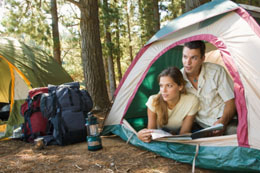
How to Adjust the Fit of Your Helmet

Fishing Victoria Bc - What You Need to Know
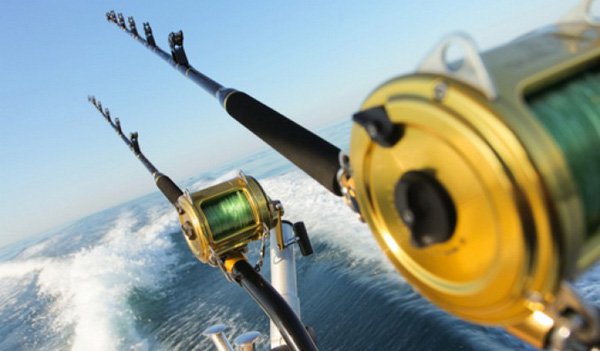
Copyright © www.mycheapnfljerseys.com Outdoor sports All Rights Reserved